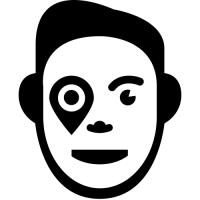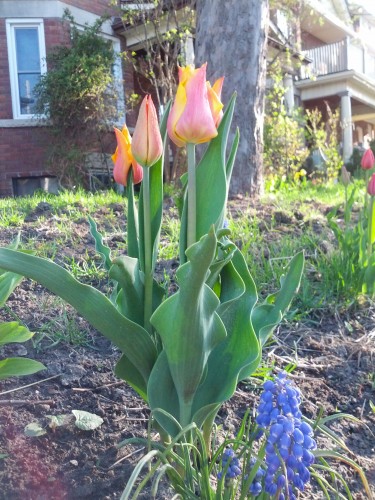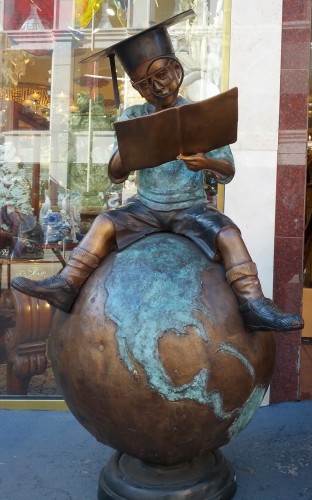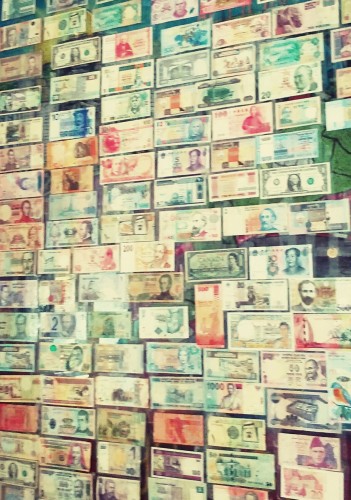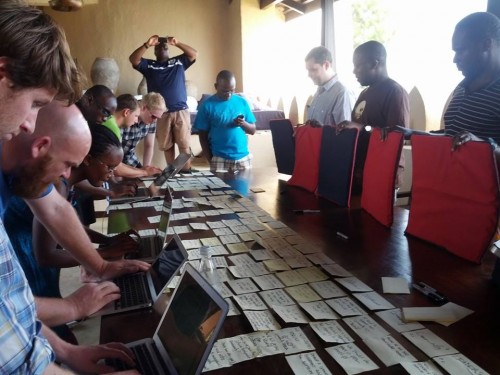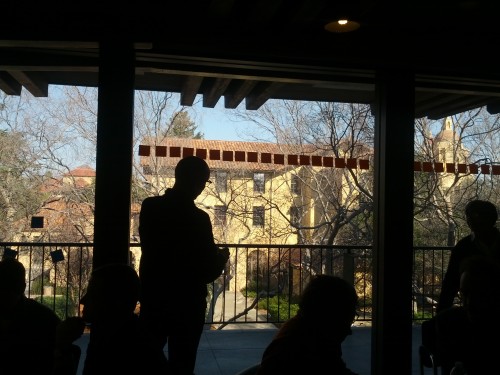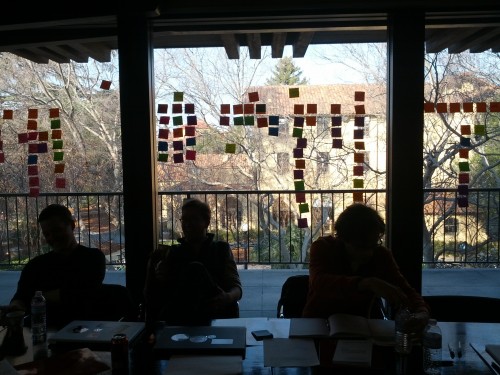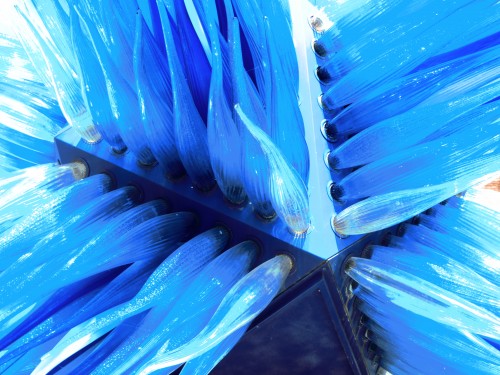Matter. Every morning we wake up and do things that matter. All of us have different versions or reasons behind “matter“. Some of us work because it provides fuel to things that matter to us like family, savings, neighbourhoods, future, or another cup of coffee. Some of us are very lucky to work on items close to our own values.
Lately I’ve been thinking more and more about how to get to the next 20000 or 2 million people who think that Open Government and Open Data Matters. Well, it strikes me that we are focusing on “matter” from the wrong direction. We are caught up in the conversations and techniques (portals, datasets). While these are very important, I think that miss the true opportunity to really talk with our neighbours. Today I am going to cite some global and local examples to highlight how we can possibly get to “matter more”.
The full Go Open Data:
A Build a Data Community Model
In the community management field, we create community playbooks. These are strategies and common methodologies to support our agendas. Here are 24 things that you can do to build community by various levels of engagement from just a little bit to more of a byte to a full meal deal experience. Your community members really lead programming to guide you in your tailored choices. I’ve hacked together a data community playbook model with Doug Belshaw & Mozilla’s Web Literacy matrix to share some ideas on how we can build global communities. Let’s keep remixing. Every community is unique, but these are some thoughts on how to build openly.
Note: This is an interactive chart. Simply role your cursor over the columns to see more data.
(on Infogram)
******
My full speaker notes
Here is a rough edit of my speaker notes and all the associated resources:
Slide 1: Matter
Matter.
Every morning we wake up and do things that matter. All of us have different versions or reasons behind matter. Some of us work because it provides fuel to things that matter to us like family, savings, neighbourhoods, future, or another cup of coffee. Some of us are very lucky to work on items close to our own values. This is a big responsibility. Not every citizen has this privilege.
Lately I’ve been thinking more and more about how to get to the next 20000 or 2 million people who think that Open Government and Open Data Matters. Well, it strikes me that we are focusing on “matter” from the wrong direction. We are caught up in the conversations and techniques (Portals, datasets) that miss the true opportunity to really talk with our neighbours. Today I am going to cite some global and local examples to highlight how we could potentially “matter more”.
(Event: Go Open Data)
Slide 2: Leaders, Teachers, Methods, Capacity Building, Core Processes.
As a crisis mapper, we tend to seek data and information like a high speed train of contributors and information. Some of the things we’ve learned are directly applicable to what the good folks in Ontario and Canada are trying to do.
Two stories:
Navigators: Humanitarian OpenStreetMap team and wider OSM community responded to the Typhoon Haiyan in the Philippines. Pierre Beland of QC (Canada) with Andrew Buck (US) worked very closely with Maning Sambale (Philippines) to remap the affected areas. These maps were then used by the American Red Cross, UN OCHA and MSF for logistics and response. How? Map Capacity, global outreach, Consumers (people who need the data) and tools like Task Manager to make it easy to share. It was an amazing effort. I had the opportunity to participate and host events in London, UK and Nairobi, Kenya. This was partially successful due to matchmaking by navigators who acted as map mentors with new mappers. We also asked some tough questions about satellite imagery, licenses and should we use drone imagery. Drones for data collection is a hard topic. The privacy issues and data integrity were also hot discussions. We don’t have the answers but we all need to ask questions about privacy and possibilities. We should be asking these hard data questions now for our province and country.
Teaching Data Skills/Data Literacy: A data portal is not an end in itself, we need to unlock it. The Govt of the Philippines and the World Bank are working with the School of Data. My colleague is in the Philippines right now working with them on these data issues. School of Data has free courses online. Take them, remix them. They belong to everyone who needs data and data skills.
Resources:
- schoolofdata.org
- hotopenstreetmap.org
- http://tasks.hotosm.org/
- http://wiki.openstreetmap.org/wiki/Typhoon_Haiyan
- http://data.gov.ph/
- http://americanredcross.github.io/OSM-Assessment/
- American Red Cross and HOT member Dale Kunce presents on the Impact of HOT – http://vimeo.com/91926804
Slide 3: Feelings and We are all data providers/collectors
At the OpenGovernment Partnership meetings in London UK last year, I had an “Ahh moment”. Chuks from Reclaim Naija ( a Nigerian community based organization) questioned the IATI speaker about “success” for budget data. He said “We won’t trust the budget data unless we are involved in the process.” While participatory budgeting is on its way in Canada, what really struck me about this statement was “Feelings.”
While we mosey down the Open Data is great parade, we need to talk about and deal with feelings about open data.
This brings up key questions – Do Ontarians trust their governments? Are we comfortable with the process?
Data collection and sharing is not about just the government. It is about citizens too. As we participate, we should collect datasets to compare and hold our governments and ourselves accountable. We should not wait for our government or big businesses to do this for us. This is our neighbourhood, our country too.
Resources:
- http://reclaimnaija.net/
- http://communitylifeproject.org/
- http://africacenter.org/wp-content/uploads/2013/10/ARP5-Africas-Information-Revolution1.pdf
- http://textontechs.com/2013/11/data-soup-ingredients-feelings-methods-and-next-steps/
4. Navigation: Are we reaching people? Businesses? How will we incorporate new technology?
I worry often that as we focus on Open Data for municipalities and what we ‘those in the know’ want from Open Data. How can we focus on what matters to people? I think we need to change this conversation.
How will sensor data be used in the next 10 years?
A friend of mine is interested in water quality and sensors. He would like to implement this in northern towns because what really matters is Water. What can we do with open data, sensors, programming and community engagement in Northern Ontario? How can we apply the elements I mentioned from Typhoon Haiyan or Reclaim Naija, but for Ontario?
All of this goes back to: Who are we involving in this conversation and why? Are we asking the right questions? And, do our NGOs, Civil society and neighbours have the skills they need to use open data for their work. The answer is – not yet.
Paul Baines is leading a project across Southern Ontario about water tracking and sustainability programming. The purpose of this participatory map is to give people a shared space to mark, explore, and dialogue about a Great Lakes Commons.
Paul needs data skills and some datasets – in terms of open data for the Commons Map – He needs:
- bottled water permits for all political jurisdictions surrounding the great lakes
- city, provincial, and federal parks
- crown, shared, and private land ownership
- watershed boundaries for all jurisdictions
- native reserves in the USA parts of the great lakes
- public hiking/biking trails for the Great Lakes
- solar and wind energy locations
- organic farms locations
We’ll hold a workshop to support his project in the coming months. But who else out needs these skills? Who is navigating all these organizations and businesses from ‘yeah, open data’ to ‘how you make it work for you’. While I am not talking about hand-holding the talent, I am saying that this gap is not going away. I’m excited about the Ontario government’s and the various city governments for their commitment to open data. Maybe we need a Service Ontario approach to Open Data. In the meantime, I have hope for people like CODI – Canadian Open Data Institute and MARsDD, Center for Social Innovation and others to make it possible. We need a civil society and neighbourhood action plan. Well, beyond what the government can do.
Recently I was speaking with a Toronto businessman about Open Data. He said: “What I really want is infrastructure data to make decisions about my business.” (Specifically he wants access to public data, like conduit and pole data.) He said that the cost to get that was very very high. I have true hope that this programme and our conversations today will help Open Data matter for him and the 100 or so people that he employs.
Resources
- http://www.ctvnews.ca/canada/kashechewan-residents-evacuated-over-flood-fears-1.1818986
- http://myeinsteinjob.blogspot.ca/
- http://myeinsteinjob.blogspot.ca/2014/04/open-government-tour-2014.html
- http://tctrail.ca/explore-the-trail/
- http://nationalmap.gov/index.html
- http://greatlakescommonsmap.org/
Slide 5: Are we asking the right questions?
The new Government of Ontario site is great start. You are asking for input. But – Point blank – are we asking the right questions to make open data and open government matter to most Ontarian…not just those in the “know” or “those online” or those in “niche circles”. Open Data is also really about citizen engagement and citizen data collection. This will help it be more sustainable and with a richer impact.
We need to go outside and get uncomfortable. In a few months, why not have an Open Government Kashachewan session? How can we use open data to help our neighbours who live in rural Ontario? How can we use open data to help emergency managers? These are highly complex questions that deserve our attention. Otherwise, our work is in vain and tailored for a niche audience. I think the best programmes using technology and intellect are those based on the practice of being a good neighbour. I am not saying that Open Data can solve wicked problems, but it should be part of the toolkits.
“Report author James Anaya, the UN special rapporteur on the rights of indigenous peoples, said there appears to be a high level of distrust among aboriginals in Canada toward the federal and provincial governments.”
Resources:
- http://www.ctvnews.ca/canada/kashechewan-residents-evacuated-over-flood-fears-1.1818986#ixzz31caBbOlh“
- http://www.ontario.ca/government/government-ontario-open-data
Slide 6: Community Playbook: Here are 24 things that could help build your community.
Go outside, remix community play books by audiences, and ask the right questions. We need consider Tim Horton’s, Community Centers and Churches as access points to Open Government and Open Data. This is why I am excited about Richard Pietro’s OpenGov Tour across Canada or the work of Marsdd or CODI. We need more creative ways to listen and create value. Maybe we should partner with bands and artists more. How would they tell this story that is currently policy laden. We don’t know another latest, greatest ‘in python not php’ transportation app. We need to dream a bit bigger and listen, really listen to what else might matter to our neighbours.
During Open Data Day, the community in Buenos Aires went outside and made a mural. What are other creative ways that we can reach people?
Coffee chats should be around community engagement and playbooks. What are the steps by audience tip and each of the associated programs behind this?
Next steps: Here are 24 tactics and programmes that could help. By all means, remix these. Please share back your community building tactics.
https://infogr.am/build-your-community?src=web
To sum – There is a global community using citizen created data and building participatory data programmes. Just ask and you might find others who are using open data for a widerange of topics that matter.
Resources:
